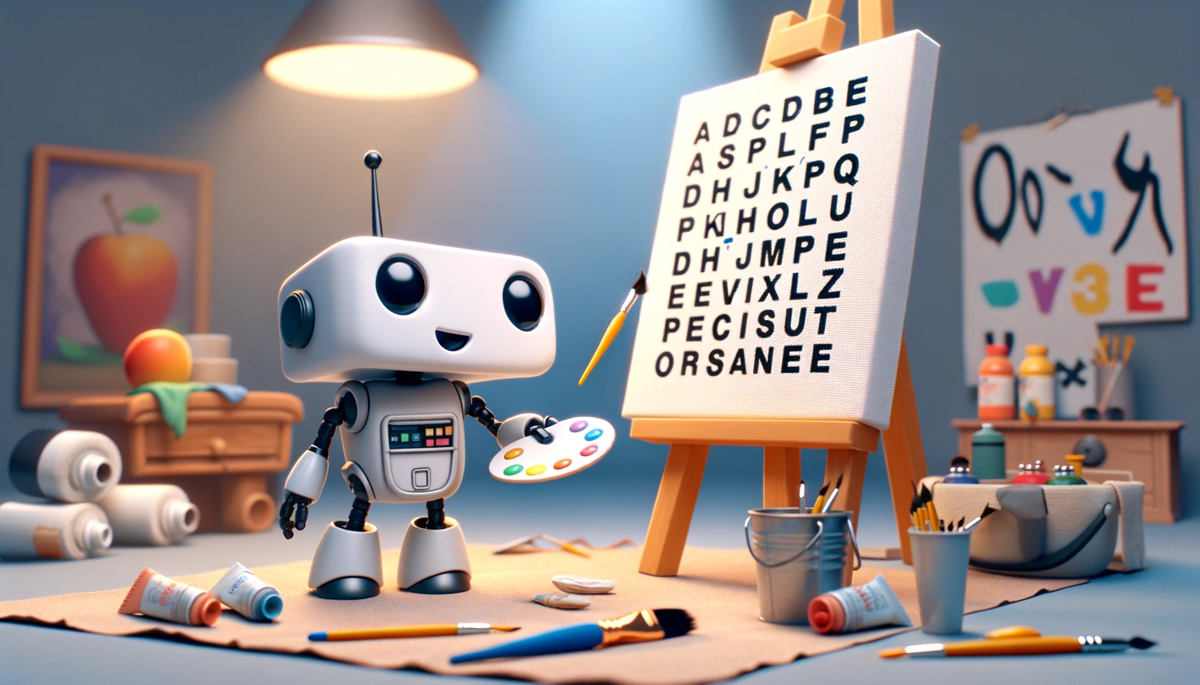AI 101: Decoding DALL-E's Spelling Woes, Why AI-Generated Text in Images Sucks
Ever wondered why DALL-E, the AI Picasso, sometimes seems more like a beginner at a spelling bee? Let's unravel this mystery in a tech-savvy way. Despite DALL-E's prowess in image generation, its occasional misspelling in images has sparked curiosity and, let's be honest, a few chuckles. But why does this happen? Is DALL-E just quirky, or is there more to the story?
Understanding DALL-E's Text Handling:
- The Text Generation Challenge:
- At its core, DALL-E is optimized for visual creativity, not textual accuracy. Generating text within images is a complex task for the model. DALL-E3, while an improvement over its predecessor, DALL-E2, still finds image text generation challenging.
- Accuracy in Textual Content:
- Users have noticed spelling errors in images generated by DALL-E, even when explicit instructions for correct spellings are provided. This inconsistency in text generation has been a long-standing issue. Even when user uses "", to emphasize a word, a modell will have to understand and reason in order to computer this request.
- The Scope of Improvement:
- OpenAI acknowledges the need for improvement in this area. Currently, DALL-E is not entirely reliable for generating extended text accurately. The writer of DALL-E said they will improve this problem in the next generation by changing the text encoder when training DALL-E.The suggestion is to limit text generation to a few words or to add text post-generation using tools like Canva for longer text.
- Success Cases and User Experiences:
- Despite these challenges, some users have reported successful instances where DALL-E generated correctly spelled text, especially for shorter phrases or when the text is a primary focus of the image. This indicates variability in the model's performance.
Technical Insights:
- AI Learning Limitations:
- DALL-E learns from diverse datasets that include both images and text. The model's learning process involves recognizing patterns in these datasets, but it doesn't inherently 'understand' text as humans do. Dall E is working on a process called diffusion, it's different from an Multi Modal LLM like ChatGPT that can 'reason'.
- Text Encoder. DALL-E uses a text encoder called T5, this encoder tokenize any text in image and assign it to a word when DALL-E is being trained. However it must have tokenized the whole word (in pixels) instead of of a series of individual letters, which leads to DALL-E sometimes adding extra character when spelling words
- Balance Between Visual and Textual Elements:
- DALL-E prioritizes visual elements in an image. When text is a secondary element, its accuracy may be compromised, especially if the text is complex or extensive.
- The Evolution of DALL-E:
- The progression from DALL-E2 to DALL-E3 has seen improvements in text generation, and future iterations like DALL-E4 are expected to offer enhanced capabilities.
Conclusion:
DALL-E's occasional spelling mishaps shed light on the complexities of AI image generation, especially when intertwining visual art with textual elements. Understanding these nuances helps us appreciate the marvels and the current limitations of AI technology. As we look forward to advancements in AI, who knows, DALL-E might just become a spelling champion one day!
SHIP IT TODAY
It's time to launch that product
We're a remote software company, building online tools for creators, builders, and side hustlers. We quit our 9-5 to pursue our dreams, and we want to help others do the same.
Backed by
Copyright © 2023 Govest, Inc. All rights reserved.
Made in Typedream

